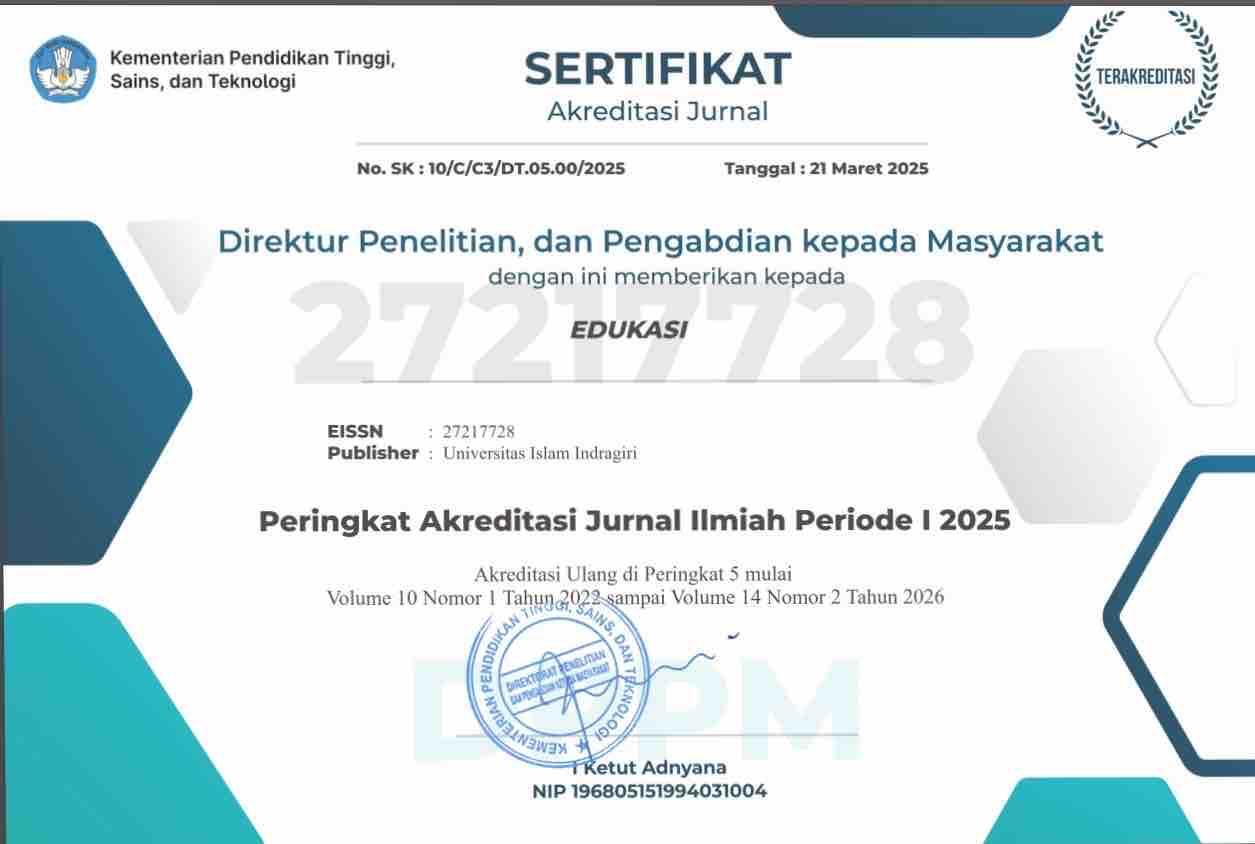Migrasi Orang Banjar Ke Kabupaten Indragiri Hilir (Studi Etno-Sosiologi Tentang Peranan Modal Sosial Dan Jaringan Sosial Orang Banjar)
DOI:
https://doi.org/10.61672/judek.v10i2.2375Keywords:
Migrasi Orang Banjar, Modal Sosial dan Jaringan SosialAbstract
The Banjar people who are in Indragiri Hilir district are one of the examples of ethnic groups that have good social capital and social networks. Their success in adapting and interacting with the various ethnic groups that exist makes them successful in the expedition. The success of the Banjar people in Indragiri Hilir is not only supported by a good work ethic but also because of their success in building social networks between their fellow ethnicities as well as with the various existing ethnic groups. This research will examine the role of social capital and social networks owned by Banjar people in the formation of interethnic relations that exist in Indragiri Hilir district. Banjar people in the concept of this research are people or ethnic descendants of Banjar who originated from South Kalimantan and now have long lived and settled in Indragiri Hilir district. The migration of Banjar people to Indragiri Hilir has been going on for decades. Their arrival in this region was not independent of the political and economic conditions that occurred in their area of origin at the time. Due to political and financial pressure in their region of origin, they migrated to various parts of Indonesia, in particular to Indragiri Hilir district. In order to maintain their existence in the destination area, they are required to adapt. With the social capital they have, they can adapt to the new area through the social network. Through a case study approach, it is expected to reveal various phenomena of migration, social capital, and social networks among Banjar people in Indragiri Hilir district.
References
Creswell, J. W. (1994). Research Design Qualitative & Quantitative Approachhes. SAGE Publications International Educational and Professional Publisher Thousand Oaks London New Delhi.
De Jong, G. F and James T. Fawcett. (1981). “Motivation for Migration: An assessment and value expactancy research model”. Dalam F. de Jong and Robert W. Gardner (eds). Migration Decision Making Multidisciplinary Approach to Micro level studies Studies in developmen Countries. Pergam Press USA. p. 213-228.
Fukuyama, F. (1995). Trust: The Social Virtues and The Creation of Prosperity. New York: The Free Press.
Hamidy, U. U. (1983). Beberapa Aspek Sosial Budaya daerah Riau. Pekanbaru: UIR Press.
Juwono, H dan Hutagalung, Y. (2006). Tiga Tungku Sejarangan: Sejarah Kesultanan Indragiri sampai Peristiwa 5 Januari 1945. Yogyakarta: Ombak.
Koentjaraningrat. (1982). Manusia dan Kebudayaan dl Indonesia. Jakarta: Penerbit Djambatan.
Lee, E. S. (2000). Suatu Teori Migrasi. (terjemahan). Yogyakarta: Lembaga Kependudukan Kependudukan Universitas Gadjah Mada.
Lewis, G. J. (1982). Human Migration, A Geographical Perspective. London & Canberra: Croom Helm.
Leirissa, R. Z. (1984). Sejarah Sosial daerah Kalimantan Selatan. Jakarta: Departemen Pendidikan dan Kebudayaan Direktorat Sejarah dan Nilai Tradisional.
Lin, N. (2001). Social Capital. Cambridge University Press.
Lutfi, M. (1976). Sejarah Riau. Pekanbaru. Pemerintah Daerah Propinsi Riau.
Mahdini. (2003). Sastra Lisan Orang Banjar. Pekanbaru: Daulat Riau.
Mantra, I. B. (1983) Migrasi Penduduk di Indonesia. Yokyakarta: Pusat Penelitian Studi Kependudukan, Universitas Gajah Mada.
McClelelland, D. C. (1961). The Achieving Society. USA: Van Nostrand.
Muthalib, A. (2008). Tuan Guru Sapat, Kiprah dan Peranannya dalam Pendidikan Islam di Indragiri Hilir Riau pada Abad ke-XX. Yokyakarta: Eja Publisher.
Naim, M. (1984). Merantau, Pola Migrasi Suku Minangkabau. Yokyakarta: Gajah Mada University Press.
Neuman, W. L. (1997). Social Reserch Methods Qualitative and Quantitative Approach. Boston: Allyn Bacon.
Pelly, U. (1994). Urbanisasi dan Adaptasi: Peranan Misi Budaya Minangkabau dan Mandailing. Jakarta: LP3ES.
Putnam, R. D. (1993). Making Democracy Work: Civic Tradition in Modern Italy. Princenton: Princenton University Press.
Toodaro, M. P. (1976). Migration in Developping Countries. First Published, Inprimerle La Concarde, Epalluges, Switzerland.
Usman, G. A. (1989). Urang Banjar Dalam Sejarah. Banjarmasin: Lambung Mangkurat University Press.
Yin, R. K. (1997). Studi Kasus, Desain dan Metode. Jakarta: PT. Raja Grafindo Persada.
Yusuf, A. (1994). Sejarah Kesultanan Indragiri. Pekanbaru; Pemerintah Daerah Propinsi Riau.








